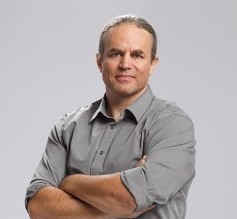Lessons learned from someone who made the change successfully.
 Featured Innovator: Chris Whittaker
Featured Innovator: Chris Whittaker
Most educators want to be better teachers, it’s in their nature. An active learning approach is being recognized as one of the best ways to do so. The evidence tells us so, but also it just makes intuitive sense that people learn better when they’re engaged in doing something.
Consider the following comparison. In an active learning approach students learn by constructing and applying knowledge, analyzing and evaluating products of their engagement, creating new solutions to problems. Compare this to traditional instruction where students may spend most of their time listening and engaged in rote learning activities.
Over the past several years Dawson physics professor Chris Whittaker has honed the way he introduces an active learning approach and as a result has significantly improved his students’ course results. Whittaker has also watched a number of his colleagues follow suit. What’s more, he’s been at the center of developing a thriving community of practice that supports and mentors peers in a new form of professional development. He is convinced that it can happen in different institutions and across a variety of levels – colleges and universities included. Proof, he’s given numerous talks and workshops at the McGill Engineering Faculty, Vanier, John Abbott and at other educational institutions.
Change Looks Like This
Chris likens the process of his own change to a curved step – or in mathematical terms, a sigmoid function. At first, change is gradual and tentative, but then a critical threshold is reached and the rate of change accelerates, feeding upon itself until it evens out.
Whittaker started by asking himself: “How do we know what works best in the classroom?” With the seed of curiosity sown, Chris began the journey. In the literature he found a thriving Physics Education Research (PER) community and closer to home he found a burgeoning group of college-level educational researchers who were asking the same kinds of questions he was (PIPER).
Yes, there’s data!
Early on in the process he discovered several tools and most notably the data! Time and again the evidence shows that active learning pedagogies – even simple ones like Peer Instruction by Eric Mazur at Harvard University – were clearly showing increases in conceptual learning with gains that almost doubled those of traditional approaches. Physics education research is luckier than most other disciplines because they have developed a robust measures of conceptual knowledge, namely the Force Concept Inventory, commonly referred to as the FCI. It is one of the most widely used research tools for introductory college and university level physics.
FCI results show that active learning approaches work better than traditional “chalk and talk” teaching. The normalized conceptual gains, measured as the change between one’s initial and final conceptual understanding divided by the total possible change, produced by were small no matter how much the students liked the teacher or thought s/he was a good teacher. What’s more, even the students who did well on the final exam often failed to pass the FCI at the end of the course. To read more about these results follow this link.
Start slow and give yourself time to grow
He started by incorporating limited active learning strategies into his teaching and almost right away he began to see improved conceptual gains in his students.
Initially, he admits there were bumps in the road and his student’s ability to problem solve seemed to take a dip, but after he learned how to focus and target his activities more carefully that quickly changed. Now, he spends a majority of the time on group problem solving rather than lecturing and he reports that his students consistently achieve conceptual gains consistent with active learning environments reported elsewhere in the research literature and his students do as well or better than their peers on all evaluative measures, including the final exam. As all this change was happening at a local level, Chris was also engaging with a broader community of teachers and researchers in the academic community. He joined the American Association of Physics Teachers (AAPT) and became the section representative for the provincial chapter, QcAPT. He also began attending Physics Education Research (PER) conferences, but most importantly perhaps, he also began to collaborate on research projects with colleagues such as Dr. Elizabeth Charles. In a research environment he found a perfect opportunity to match theory with practice but doing so was difficult at times. He describes himself as taking a step back before going forward: “It took some time to work out the balance of teaching theory and teaching practice in the classroom.” Eventually, however, he hit his stride.
So take heart, fellow teachers. It may seem like you’re fighting a lonely uphill battle against firmly entrenched ideas, but with some patience, diligence, and subtleness, you’ll be surprised how quickly the change comes.
For more info on Chris’ pedagogical practices and strategies, check out other featured web-articles and publications.


